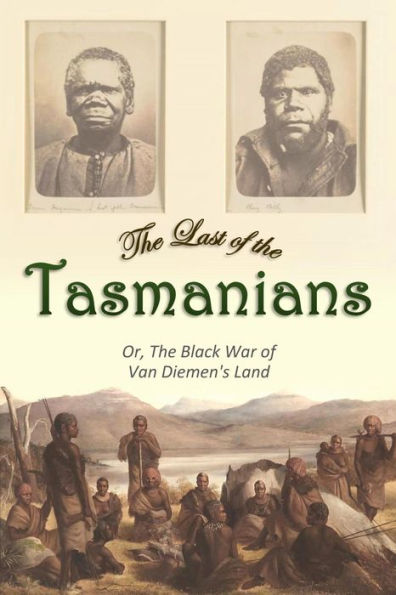"The worst days of the Conquistadors lack the dastardly and disgraceful cruelty which renders those of the 'Black War' horrible and humiliating to the reader." - Contemporary Review, 1870
"Every one must recognise the immense service Bonwick has done in preserving so much that would otherwise have been irretrievably lost." - Royal Society of Tasmania, 1902
Having lived in Tasmania for 8 years as a teacher, James Bonwick (1817 –1906), an English-born Australian historical and educational writer, was the most qualified person to write about the destruction of Tasmania's Aboriginal population.
In 1870, Bonwick published "The Last of the Tasmanians," in which he gives a history of the relations between the now extirpated Tasmanians and their European extirpators, beginning practically with the massacre of the Blacks in 1801, and ending with Lanne, the last man and Lalla Bookh, the last woman of the race.
The destruction of Tasmania's Aboriginal population on Tasmania has been described as an act of genocide by historians including Robert Hughes, James Boyce, Lyndall Ryan and Tom Lawson. The author of the concept of genocide, Raphael Lemkin, considered Tasmania the site of one of the world's clear cases of genocide and Hughes has described the loss of Aboriginal Tasmanians as "the only true genocide in English colonial history".
Keith Windschuttle in his 2002 work, The Fabrication of Aboriginal History, Volume One: Van Diemen's Land 1803–1847, questioned the historical evidence used to identify the number of Aboriginal people killed and the extent of conflict. He stated his belief that it had been exaggerated and he challenged what is labelled the "Black armband view of history" of Tasmanian colonisation. Windschuttle argued that there were only 2000 Aboriginal people in Tasmania at the moment of colonisation, that they had an internally dysfunctional society with no clear tribal organisation or connection to the land and were politically incapable of conducting a guerrilla war with the settlers. He argued they were more like "black bushrangers" who attacked settlers' huts for plunder and were led by "educated black terrorists" disaffected from white society. He concluded that two colonists had been killed for every Aboriginal person and there was only one massacre of Aboriginal people. He also claimed that the Aboriginal Tasmanians, by prostituting their women to sealers and stock-keepers, by catching European diseases, and through intertribal warfare, were responsible for their own demise. His argument in turn has been challenged by a number of authors.
Bonwick's own assessment of fault is readily apparent in his book:
"We came upon them as evil genii, and blasted them with the breath of our presence. We broke up their home circles. We arrested their laughing corrobory. We turned their song into weeping, and their mirth to sadness. Without being disciples of Rousseau, without the simple faith of the French voyager, who discovered a nymph of grace and beauty in the dark Oura Oura of the woods, and beheld primeval innocence in the gentle, patriarchal government of tribes, it may yet be believed that social virtues were developed beneath the gum-tree shade — that maternal joy sparkled in the eyes of the opossum-skin clad one, as she joined in the gambols of her picaninny boy—that honest friendship united hands and hearts of brother hunters—while soft glances, sweet smiles, and throbbing bosoms, told that love could dwell within clematis bowers, as well as in the woodbine shade.



